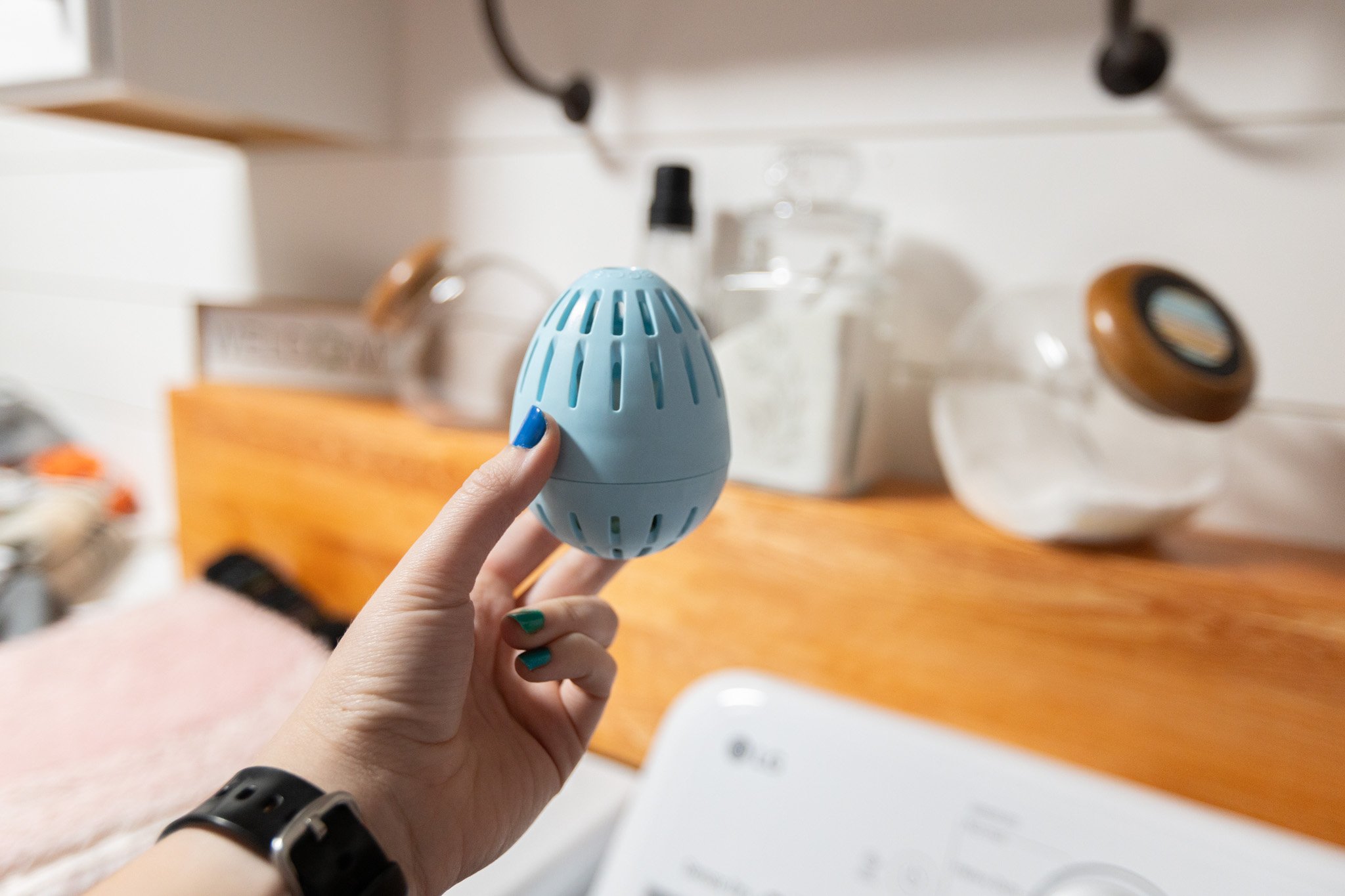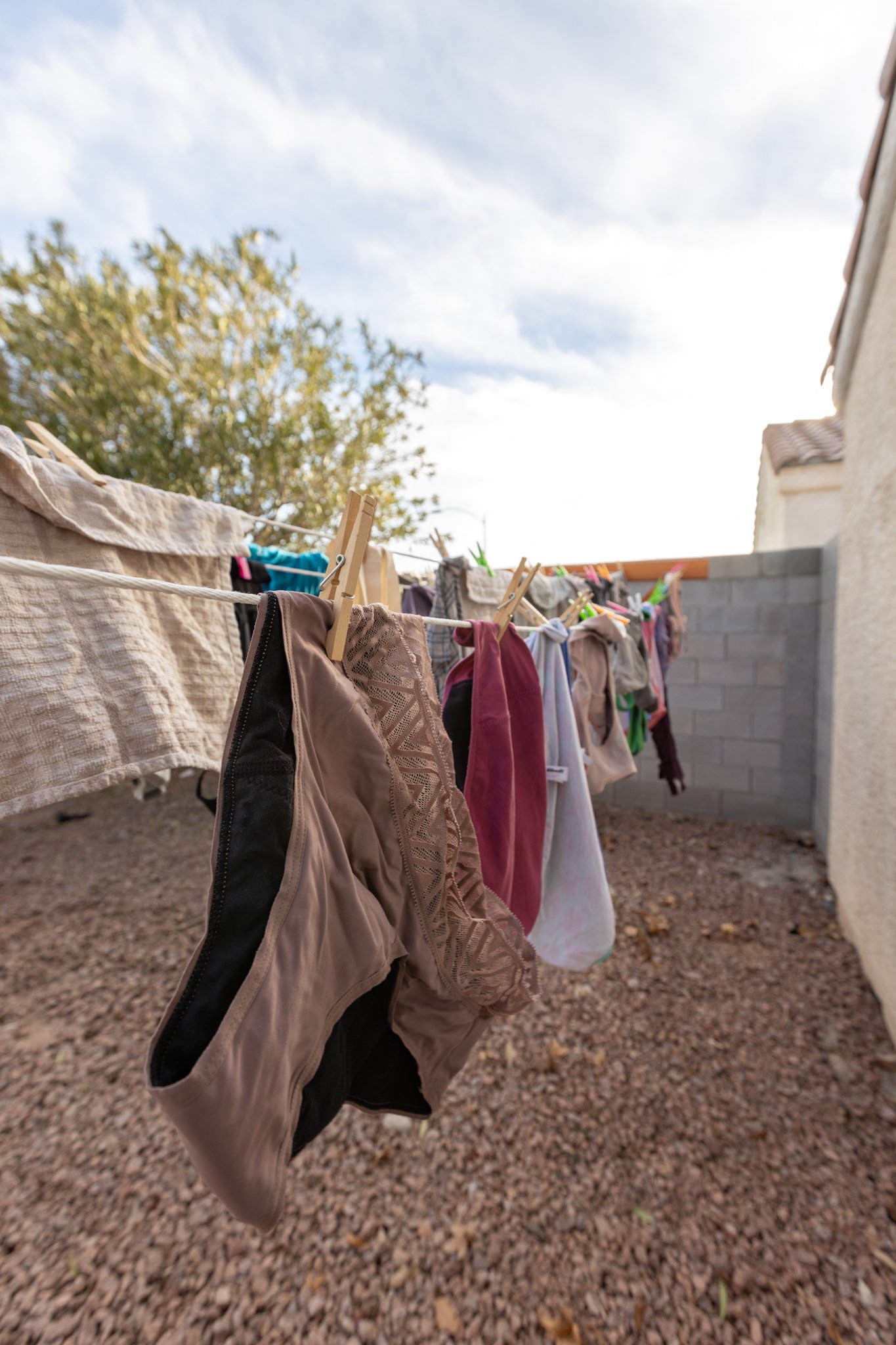Zero Waste Laundry Essentials to Save Money and the Planet
Changing out your laundry routine for a more zero-waste laundry routine is easier than it seems! I’ve been doing some form of zero-waste laundry for over 6 years and for me, it’s ever-changing depending on my needs, what I learn, and where I’m living. We will discuss how it’s changed for me later on in this post.
Let us know below how you do low-waste laundry and read along for more eco-laundry essentials!
Detergent
Zero-waste laundry detergent comes in many forms. Some are more pollutive than others, some are cheaper, and some are less messy, so let’s dive into the ins and outs of some of these popular low-waste laundry detergents and see what’s right for you.
Laundry Sheets
This has become a hotly debated eco-laundry detergent option over the last year or so. Why? Most laundry sheets contain PVA, polyvinyl alcohol, which is not a plastic but it behaves like one. It is not always guaranteed to break down in water and can create pollution in our waterways. Certain microbes must be present for it to break down and they’re usually present in big cities. But, if you’re in a smaller community or even have your own septic tank, it’s not guaranteed.
Personally, I don’t risk it when there are truly plastic-free options out there. I know these are a great swap for others, though! Here are some pros to laundry sheets:
Mess-free
Perfectly proportioned
Small and lightweight, great for dorms, travel, tiny homes, and more
Relatively inexpensive
You can learn more about the cons of laundry sheets in this video and this follow-up video to decide if they’re right for you.
Liquid
Laundry liquid is often very NOT eco-friendly from brands like Tide and Gain. But, there are a few eco-formulated liquid laundry detergents out there you may be interested in. I’ve tested Bestowed Essentials, Clean Cult, and Dirty Labs and they all have their separate pros and cons, but here are some overall pros and cons of eco-liquid detergent:
Pros:
It’s the same as you’ve used before, no learning curve
Easy to use
Earth and human-friendly formulas compared to regular liquid detergents
Cons:
Heavy to ship
You’re paying for water
Clean Cult specifically comes in paperboard which is not commonly recycled
While Dirty Labs comes in metal, they use new metal and do not refill their bottles
Messy to measure
Powder
Powder is probably THE most eco-friendly option if you get it from the right place. Many brands (even mainstream brands you’ll find in traditional grocery stores) come in paper or cardboard making them VERY low waste. Brands like Meliora also sell in bulk which can save money and waste and they also take their buckets back for reuse.
But, even if you buy powder from Walmart, for example, in paper, that’s much better than buying liquid detergent in a jug. Here are some pros and cons to powder detergent:
Pros:
You’re not paying for water, saving you money
No water in the formula also equals less shipping emissions
Mess-free
Easy to measure
Cons:
Not all machines handle powders
It’s easy to over-use powder and clog your machines; measure carefully!
Mainstream powder, while plastic-free, can still contain harmful ingredients
Other options
There are a few other laundry options I’ve tested that don’t fit into these categories such as…
Laundry Egg
This contraption uses stones that clean your clothes. I wish I knew the science behind it, perhaps it’s on their website. I’m still reviewing it now as I type this, but so far so good! As an RV lifer, this is a great option for me as it’s the smallest option and the least messy (besides sheets). The egg lasts many, many washes but the biggest downside is the pebbles have to be thrown away. It’s much less waste than some other options, but not perfect. I love its ease of use, no mess, and no need to measure anything, though!
Soap Nuts
Soap nuts are literal nuts (well, dried berries) that foam up when added to water. You chuck a few in a bag in your load of laundry and they clean your clothes! This is easily the most natural and fewest ingredients option. Though, it can be hard to find some from an ethical source. If you compost, this is a LITERALLY zero-waste laundry option! I have no qualms with soap nuts other than that it can sometimes be harvested and sold unethically, so check your sources!
Want to hear more about these eco detergents in full? Check out my plethora of reviews here:
Zero waste laundry detergent review pt 1 (Seventh Generation, Soap Nuts, Buncha Farmers, TruEarth)
Low waste laundry detergent review pt 2 (Lazy Coconuts, Earth Breeze, Dropps, Ethique, Molly’s Suds, Kind Laundry)
Eco-friendly laundry detergent review pt 3 (Clean Cult, Eco Roots, Dirty Labs,
Stain Remover
Stain remover traditionally is probably one of the most harmful ingredients we can use. So, let’s change that! There are tons of zero-waste stain remover options on the market and most of them are very similar in ingredients, packaging, and price. I did a test years ago and found that no one brand outperformed the other, so choose what works for you!
How it works is it is a concentrated stick of low-waste stain remover. You wet your clothing and give it a quick scrub with the eco stain remover bar. Store in a dry place and use over and over again. My stain remover bar that I kept that I used heavily for this experiment I STILL to this day and I got it in 2019!!! They last forever! And yes, they truly work, see the proof here.
Washing
Okay, you’ve gotten your stains out and you’ve picked your detergent, but the zero-waste laundry swaps don’t stop there! Let’s move on to some tips for washing your clothes in a more eco way.
Eco setting
Some modern washing machines have an “eco” or “green” setting. What does this do? It depends on the machine. Some may alter the temperature of the water to use less energy, some may use less water, some may use less energy in other means, some may do a combination of these or all of them, or have more eco options! The point is that this eco setting will do SOMETHING to reduce energy usage, water usage, and overall emissions.
It may seem silly that one load of laundry can reduce waste, but you really have to think of it over the long run. If you do 2 loads of laundry per week, just your household has the chance to save water, energy, and emissions, 104 times per year JUST with laundry! It can add up!
Wash on tap cold
Maybe you don’t have an eco-setting, your machine should have a “tap cold” setting. My mom’s machine is this way. What is this exactly? It means it will use whatever temperature the tap water is naturally. I used to say “wash your clothes on cold” but in the summer, that actually uses a lot of energy to turn that groundwater cold!
While cold water can still preserve your clothes longer, tap cold is the most eco when it comes to energy conservation. If the ground water is cold, it’ll be washed on cold. If the groundwater is hot, it’ll be washed on hot. The machine won’t use any energy to heat OR cool the water and you don’t have to sweat what temperature to pick to be the most eco-friendly.
Full Load
Always wash a full load! While some machines may have small load settings, it’s best to maximize your water, energy, and detergent usage by washing a full load instead of a small or partial load. For me, this looks like even washing my period underwear (pre-rinsed) and hankies with the rest of my clothing. I also don’t wear a lot of white (if any) so I don’t have to worry about combining colors.
Don’t have a laundry machine, use a laundromat!
Don’t go out and buy a washing machine if you don’t have one, try a laundromat first! Now, this does depend. Some laundromats are stupid expensive, it’s probably better to just buy a cheap secondhand machine instead. But, some are reasonably priced. And, it’s better to use what’s already been created and share it with others than everyone buying brand-new tech.
The biggest downside to laundromats (I have a ton of experience as a full-time RV-er) is that you usually cannot control the temperature. This means more energy usage AND it may make your clothes fade. I used to line dry clothing (more on that below) and my clothes were in such good shape til we moved into the RV and our clothes were automatically washed and dried on the hottest settings. I did notice (quite quickly) that our clothes were starting to fade.
Choosing a washing machine and dryer
In the market for a washing machine? Let’s discuss how to find an eco-friendly one.
This may be a hot take but I think ANY secondhand washing machine is better than even the most high-tech, green washing machine you can buy brand new. Why? It takes insane amounts of resources to create new tech, particularly something as large as a washing machine. Even if it’s not the MOST eco, an older model secondhand machine will save so many resources from being created instead of buying new. Not to mention, it’s WAY cheaper.
But, let’s say you do want something brand new, what should you pick?
Check out its eco settings. Does it have a reduced energy or water setting? Can you wash on tap cold? Is is high-efficiency? See how many eco boxes it can check and opt for that one.
Drying
Moving on to drying your clothing after it’s been washed! I’ve done all of these options, so let’s discuss…
Line dry
Using a clothesline will always be my favorite method of drying clothes. Maybe I’m biased cause I did this in Las Vegas where the weather was literally perfect for it, but for now, it’s the best. But why?
It saves money by not having to run the dryer 1-3 times per week (for us, maybe it’s more for you)
It saves energy by harnessing free wind and solar energy
As mentioned above, it DOES preserve your clothes! Especially if you line dry at night and you don’t risk sun-bleaching them.
This could look different for everyone on just exactly HOW you do it, but for us, Dan built us a line from scratch with wood and paracord and I thrifted all of our clothes pins.
Or…
Drying rack indoors
Maybe you live in a wet or cold environment but still want to try air drying your clothes, what can you do? Get an indoor drying rack! There are lots of models out there from ones you can mount to the wall, ones that hang on in a circle, or some that hang like a fence. Find what works for you and place it in a room with the best airflow to ensure proper drying.
Dry on lower heat
But maybe you don’t have space for either of these options, what can you do now? You can dry your clothes on a lower heat setting to save energy and preserve your clothes. Now, you don’t want to dry it completely cold, that will just take ages, but lower the heat a little bit. And, you can use something else to speed up the drying process…
Use dryer balls
Dryer balls are great at helping your clothes to jumble around and not stick together which helps speed up dry time. This is great especially if you’re drying on a lower heat. They also take the place of wasteful dryer sheets to help reduce static!
There you go! There are many ways to incorporate these low-waste swaps into your eco-laundry routine. Take what works for you and leave what doesn’t. I include all of these options cause I know that there is no one-size-fits-all. Even I’ve changed my laundry routine over the years!
Okinawa: washed on tap cold, preferred laundry sheets, dried most of my clothes by machine but sometimes used an indoor drying rack
Las Vegas: washed on tap cold, preferred liquid laundry detergent, dried outdoors exclusively
Washington in the RV: exclusively used a laundromat, had no control over temperature or time, using up laundry sheets I already bought but will not buy laundry sheets again
Ohio: wash on tap cold, timed dry in the drying machine, testing new laundry detergent options
As you can see, no one way is correct. Do what works for you and remember that your small actions really do make a big difference in the long run :)
Emma











